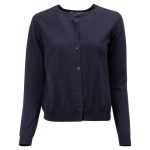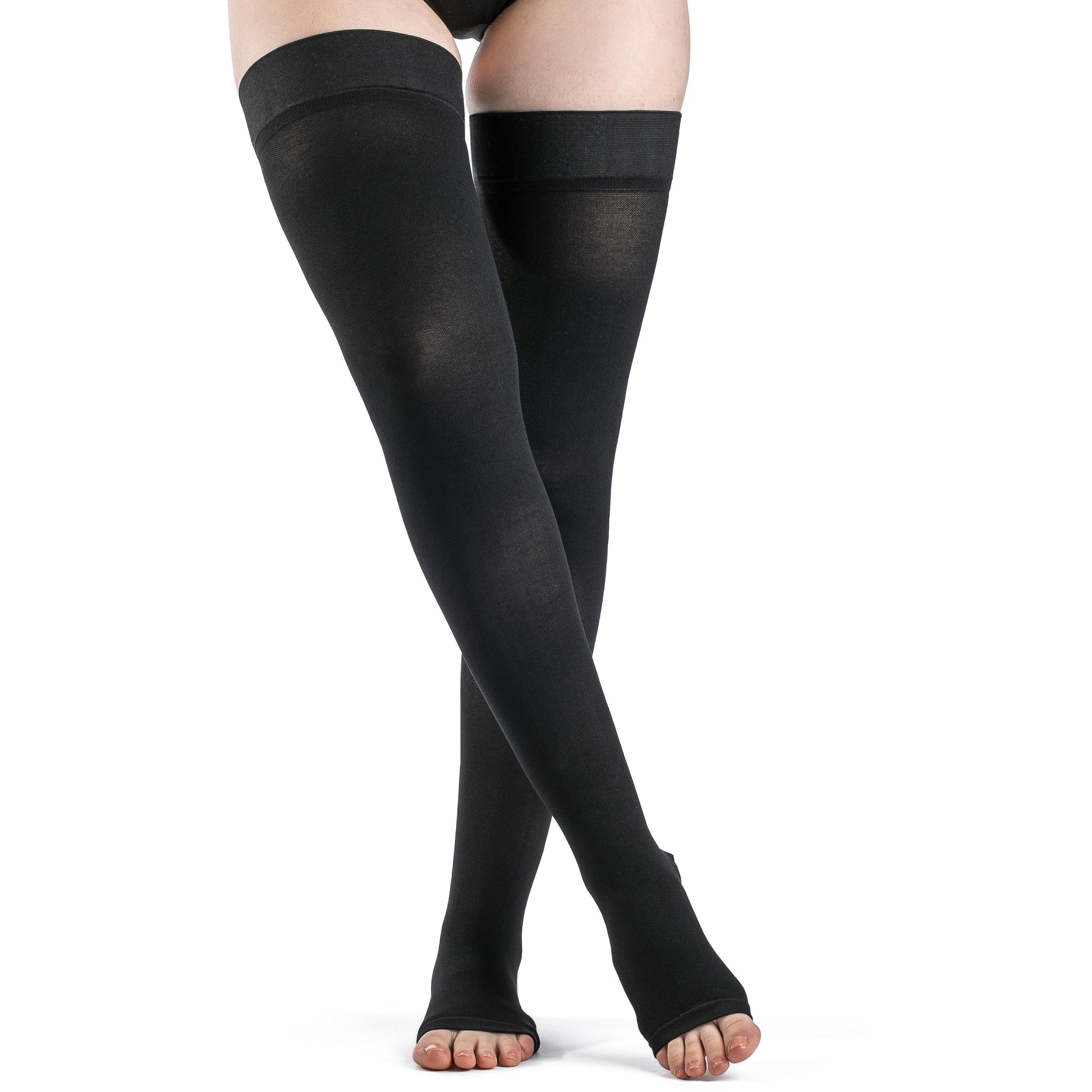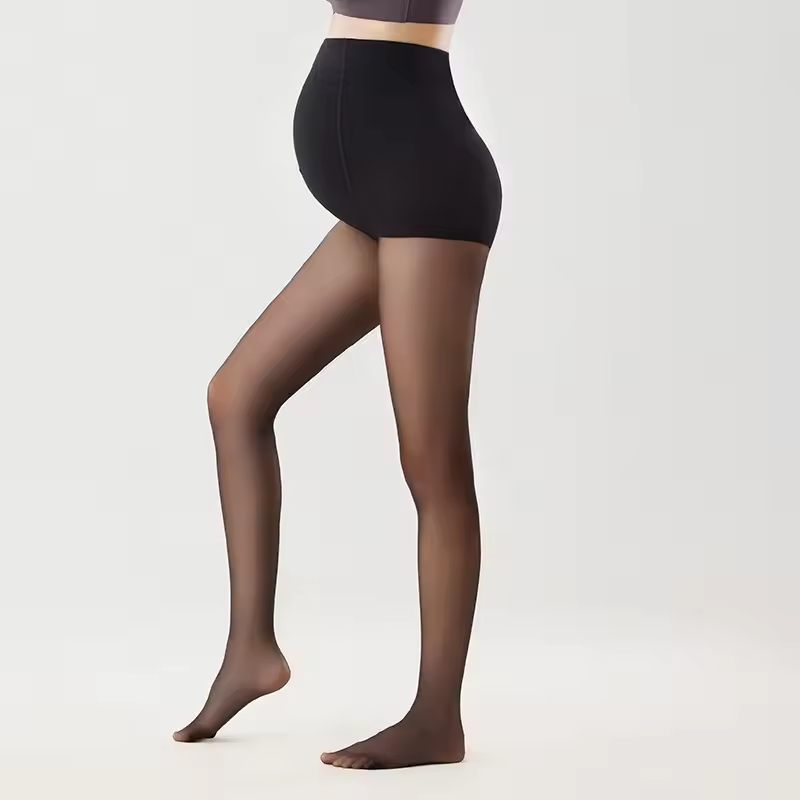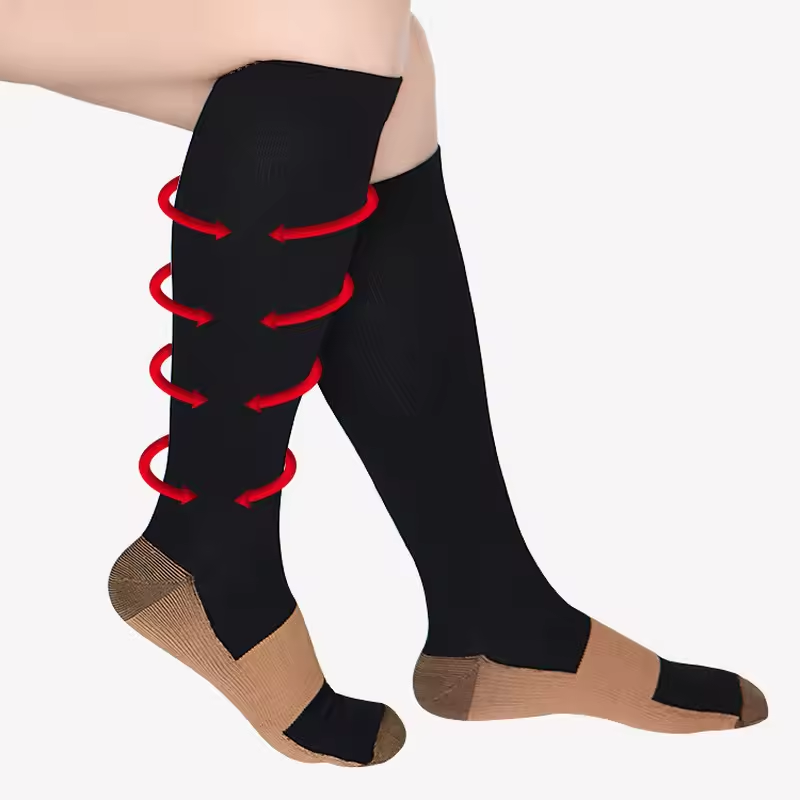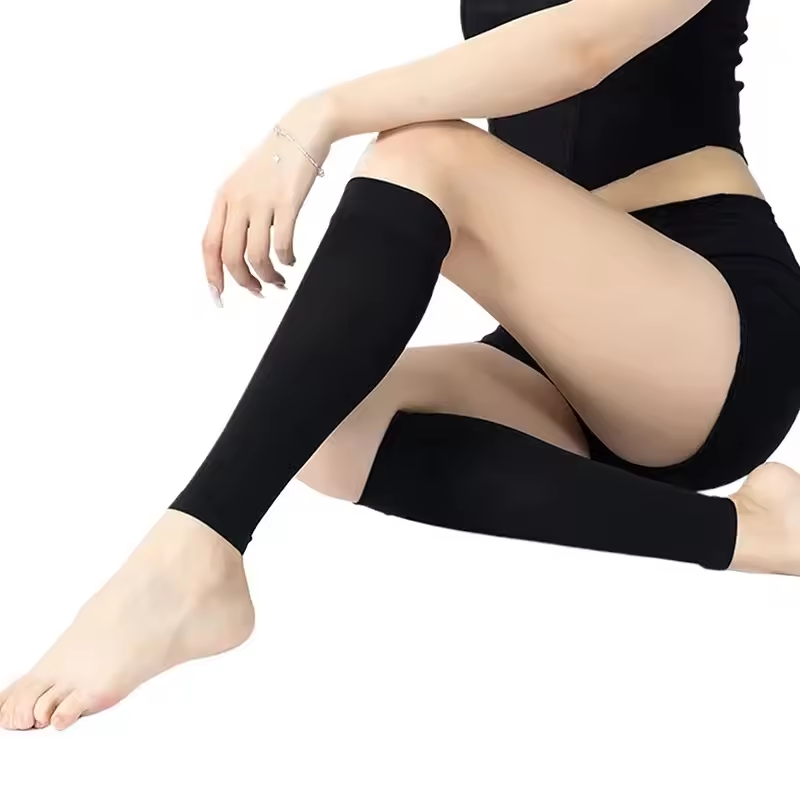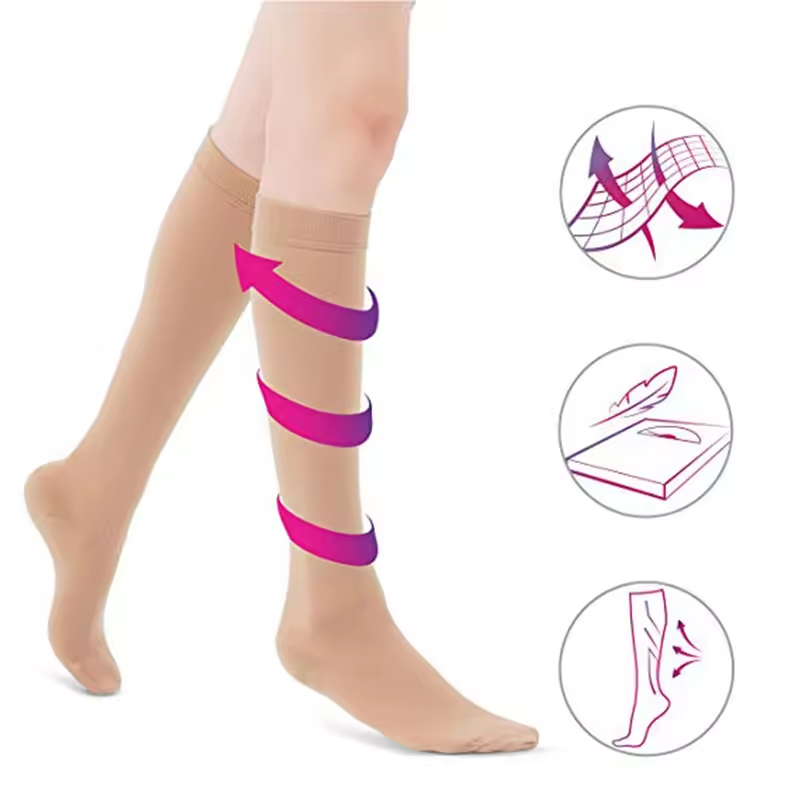Introduction
Thigh-high compression stockings, with a compression level of 20-30 mmHg, are an essential garment for individuals seeking relief from various medical conditions or simply looking to improve circulation and reduce leg discomfort. In this comprehensive guide, we’ll delve into everything you need to know about these stockings, including their benefits, uses, proper fit, and care instructions.

Understanding Compression Stockings
Compression stockings are specially designed garments that apply gentle pressure to the legs, helping to improve blood flow and prevent swelling, fatigue, and discomfort. Thigh-high compression stockings extend from the foot to the thigh, providing comprehensive compression coverage for the entire leg.
Benefits of Thigh High Compression Stockings (20-30 mmHg)
- Improved Circulation: Thigh-high compression stockings promote better circulation by applying graduated compression, with the highest pressure at the ankle gradually decreasing as it moves up the leg. This helps push blood upward toward the heart, reducing the risk of blood pooling in the lower limbs.
- Reduced Swelling: Compression stockings help reduce swelling (edema) in the legs and ankles by preventing fluid buildup and promoting lymphatic drainage. This can be particularly beneficial for individuals with conditions such as lymphedema or venous insufficiency.
- Relief from Leg Discomfort: Wearing thigh-high compression stockings can provide relief from symptoms associated with poor circulation, such as leg heaviness, achiness, fatigue, and cramping. They can also alleviate discomfort caused by prolonged standing or sitting.
- Prevention of Blood Clots: Compression stockings help reduce the risk of deep vein thrombosis (DVT) and blood clots by encouraging blood flow and preventing blood from pooling in the veins, especially during long periods of immobility, such as during travel or bed rest.
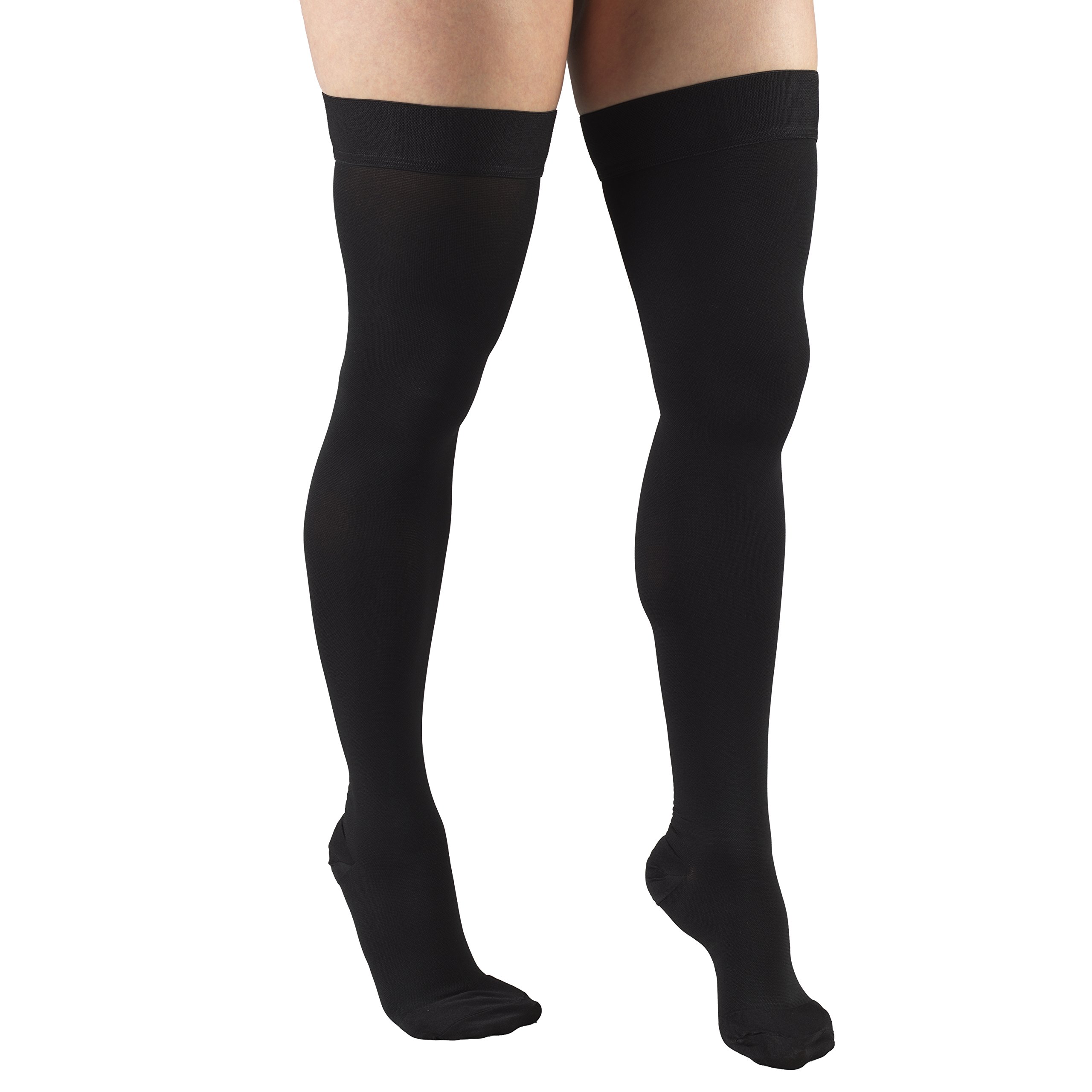
Choosing the Right Compression Level
Compression stockings are available in various compression levels, typically measured in millimeters of mercury (mmHg). The ideal compression level depends on your specific needs and the recommendation of your healthcare provider. Thigh-high compression stockings with a compression level of 20-30 mmHg are considered moderate compression and are suitable for:
- Treating mild to moderate varicose veins and spider veins
- Alleviating symptoms of chronic venous insufficiency (CVI)
- Managing swelling and discomfort during pregnancy
- Preventing blood clots during travel or post-surgery recovery
- Improving circulation and reducing leg fatigue for individuals who stand or sit for long periods
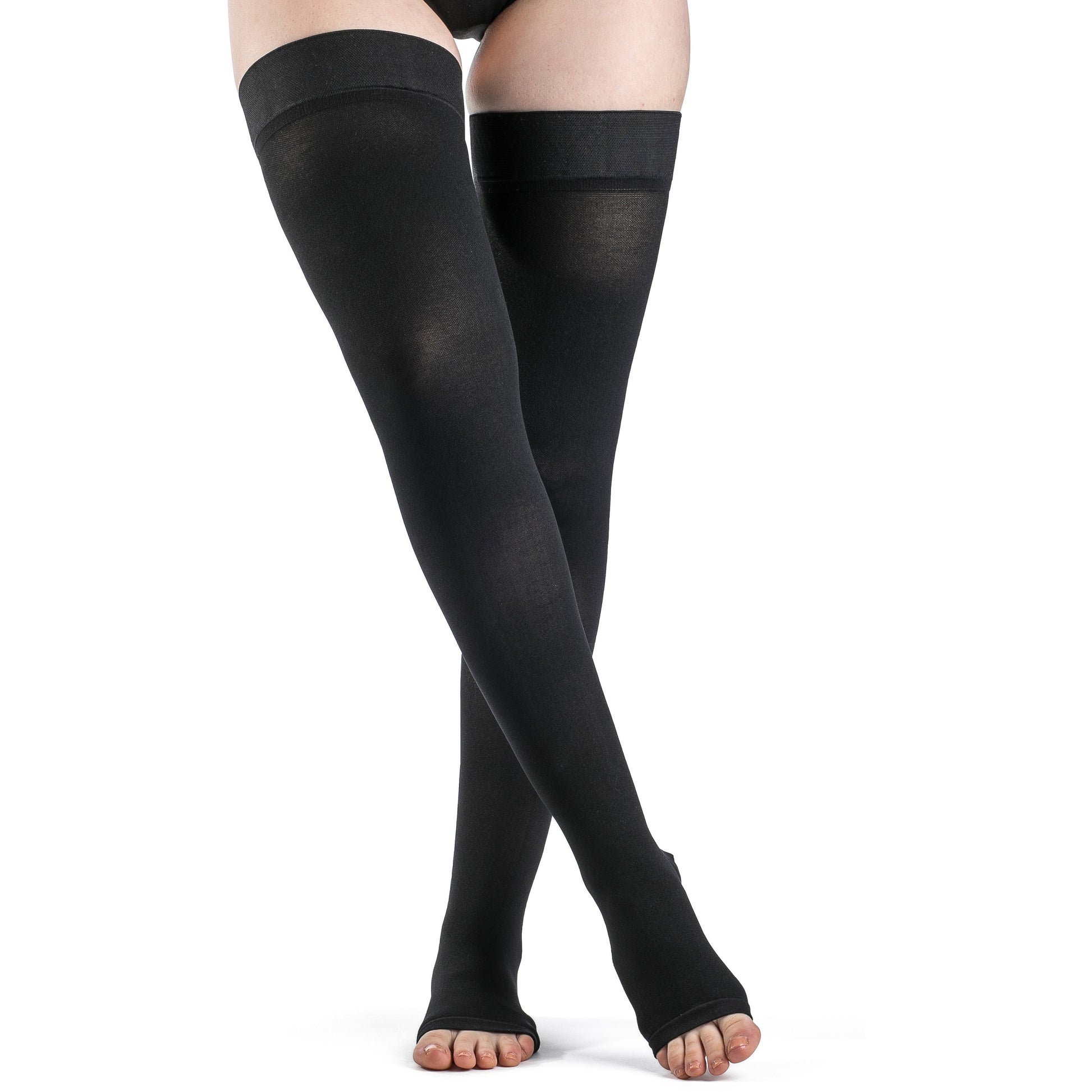
Ensuring Proper Fit
Proper fit is essential for the effectiveness and comfort of thigh-high compression stockings. Follow these steps to ensure a proper fit:
- Measurements: Take accurate measurements of your ankle circumference, calf circumference, and thigh circumference, as well as the length of your leg from the heel to the top of the thigh.
- Consult Sizing Charts: Use sizing charts provided by compression stocking manufacturers to determine the appropriate size based on your measurements. Sizes may vary between brands, so be sure to refer to the specific brand’s sizing guidelines.
- Trial and Adjustment: Try on the compression stockings and ensure that they fit snugly but comfortably. Make any necessary adjustments, such as adjusting the position of the stockings or folding over the silicone band at the top to prevent rolling.
- Seek Professional Assistance: If you’re unsure about sizing or fitting, consult with a certified fitter or healthcare professional who can provide personalized guidance and recommendations.
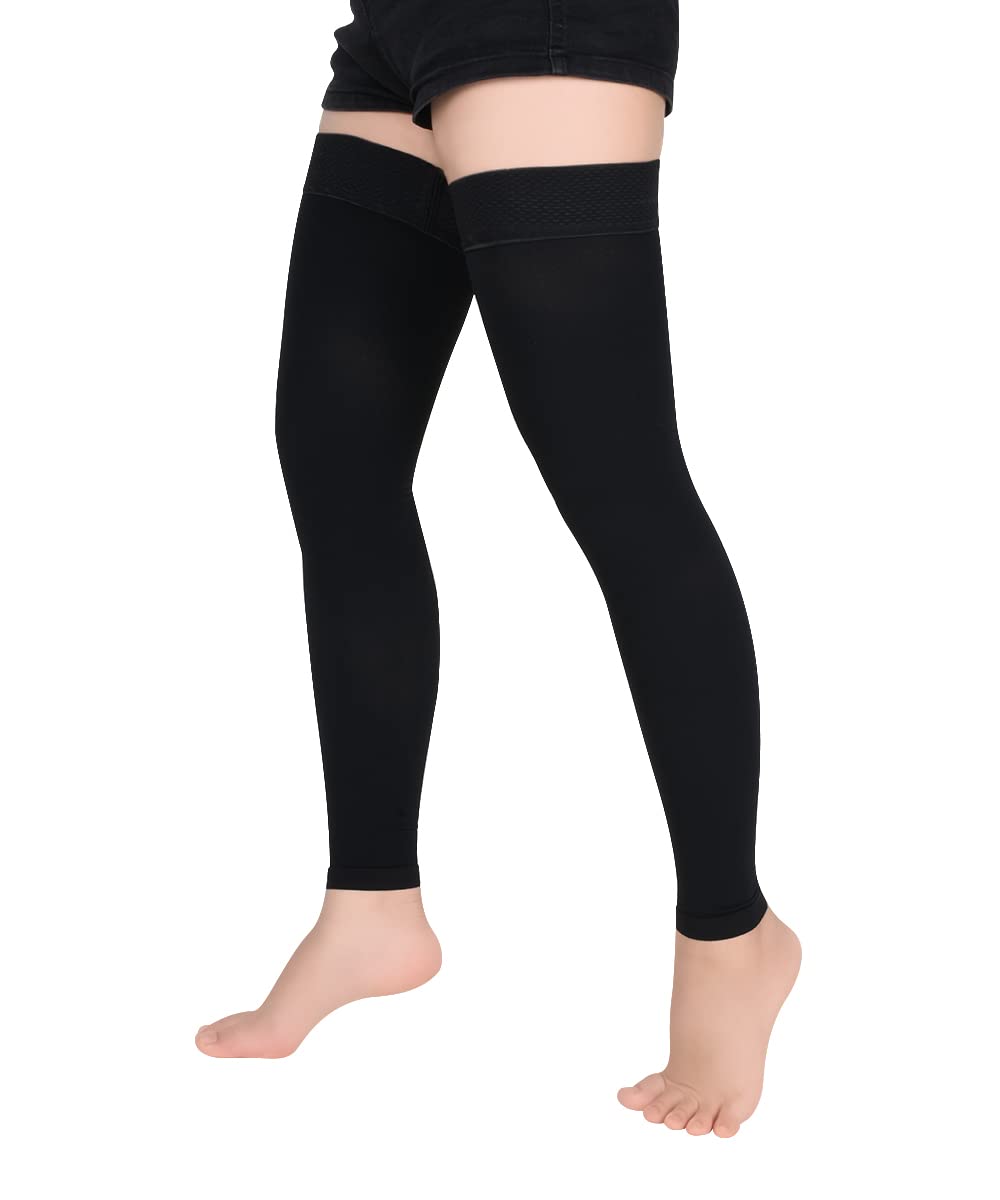
Caring for Your Thigh High Compression Stockings
Proper care and maintenance are essential for prolonging the life and effectiveness of thigh-high compression stockings. Follow these tips for caring for your compression stockings:
- Hand Washing: Wash compression stockings by hand using mild soap and lukewarm water. Avoid using harsh detergents or bleach, as they can damage the elastic fibers of the stockings.
- Gentle Drying: Gently squeeze out excess water from the stockings and lay them flat to dry on a clean towel. Avoid wringing or twisting the stockings, as this can distort their shape.
- Avoid Heat: Do not expose compression stockings to direct heat sources such as radiators, heaters, or dryers, as high temperatures can damage the elastic fibers and reduce the compression effectiveness.
- Rotate Stockings: Rotate between multiple pairs of compression stockings to allow each pair to fully dry between wearings. This helps prevent moisture buildup and prolongs the lifespan of the stockings.
- Replace as Needed: Over time, compression stockings may lose their elasticity and effectiveness. Monitor the condition of your stockings regularly and replace them as needed to ensure optimal compression and comfort.

Tips for Wearing Thigh High Compression Stockings
Wearing thigh-high compression stockings correctly is essential to ensure their effectiveness and comfort. Here are some tips for wearing them properly:
- Put Them On in the Morning: Wear your thigh-high compression stockings first thing in the morning when swelling is minimal. This ensures a proper fit and maximum effectiveness throughout the day.
- Use Donning Aids: If you have difficulty putting on compression stockings, consider using donning aids such as stocking donner devices or rubber gloves to help slide the stockings up your legs smoothly.
- Roll Them On: To put on thigh-high compression stockings, roll them down to the heel, insert your foot, and gradually roll them up your leg, smoothing out any wrinkles or bunching along the way. Avoid pulling or tugging excessively, as this can damage the stockings.
- Ensure Even Compression: Make sure the compression stockings are evenly distributed and snug but not too tight. Check for any folds or creases that may indicate improper positioning and adjust as needed.
- Smooth Out Bunching: If you experience bunching or rolling down at the top of the stockings, gently smooth out the fabric and adjust the position to ensure a secure fit without constricting blood flow.
- Wear with Proper Clothing: Choose clothing that allows easy access to your thighs when wearing thigh-high compression stockings. Avoid tight-fitting garments that may cause discomfort or restrict blood flow.
- Reapply as Needed: If you remove your compression stockings for any reason during the day, such as bathing or changing clothes, be sure to put them back on as soon as possible to maintain consistent compression and support.
Conclusion
Thigh-high compression stockings with a compression level of 20-30 mmHg offer numerous benefits for individuals seeking relief from various leg-related conditions or simply looking to improve circulation and reduce discomfort. By understanding their benefits, choosing the right compression level, ensuring proper fit, and caring for them properly, you can maximize the effectiveness and longevity of your thigh-high compression stockings. Whether you wear them for medical reasons or for everyday comfort, these stockings can help you step into a world of improved leg health and vitality.



